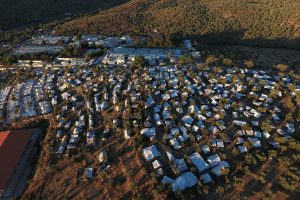
By Julia Love
TIJUANA (Reuters) – The United States will send the first group of Central American asylum seekers back to Mexico on Tuesday, a U.S. official said, as part of a hardened immigration policy to keep migrants south of the border while their cases are processed in U.S. courts.
Tuesday’s return of migrants was to be carried out under a policy dubbed the Migrant Protection Protocols (MPP), Department of Homeland Security spokeswoman Katie Waldman said. Mexican officials had said on Friday that the transfers would happen that day.
MPP was implemented “once the appropriate field guidance was issued,” Waldman said.
A Mexican official, speaking on condition of anonymity, also said the first group would be sent across on Tuesday.
Under MPP, the United States will return non-Mexican migrants who cross the U.S. southern border back to Mexico while their asylum requests are processed in U.S. immigration courts.
Asylum seekers have traditionally been granted the right to stay in the United States while their cases were decided by an immigration judge, but a backlog of more than 800,000 cases means the process can take years.
U.S. authorities are expected to send as many as 20 people per day through the Mexican border city of Tijuana and gradually start sending people back through the other legal ports of entry, Mexico’s foreign ministry said on Friday.
The U.S. policy is aimed at curbing the increasing number of families arriving mostly from Central America to request asylum who say they fear returning home because of threats of violence there. The administration of U.S. President Donald Trump says many of the claims are not valid.
(Reporting by Julia Love in Tijuana, Yeganeh Torbati in New York and Dave Graham in Mexico City; Writing by Delphine Schrank and Anthony Esposito; editing by Grant McCool)












